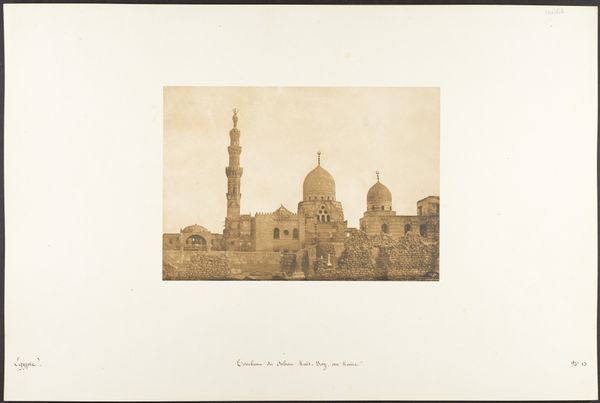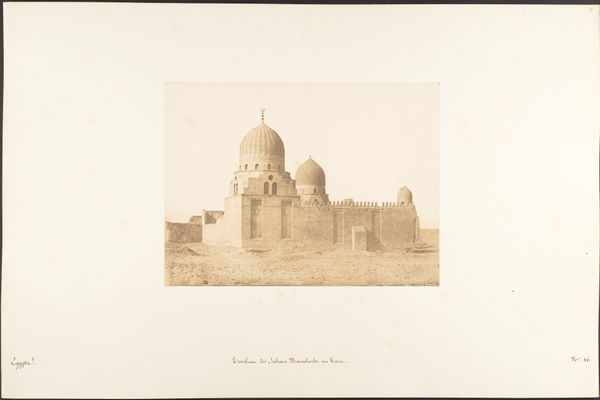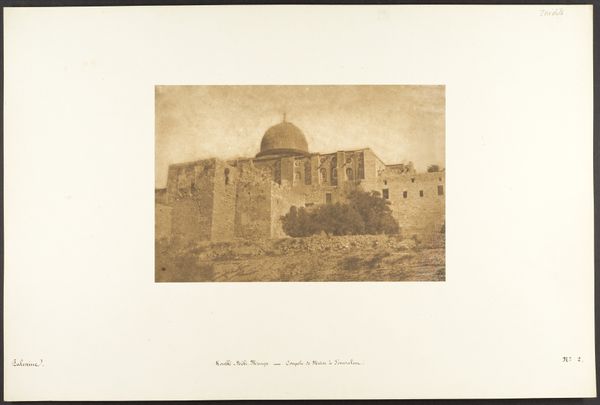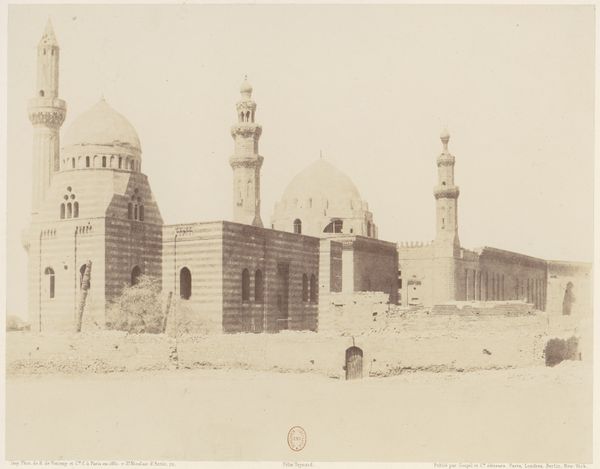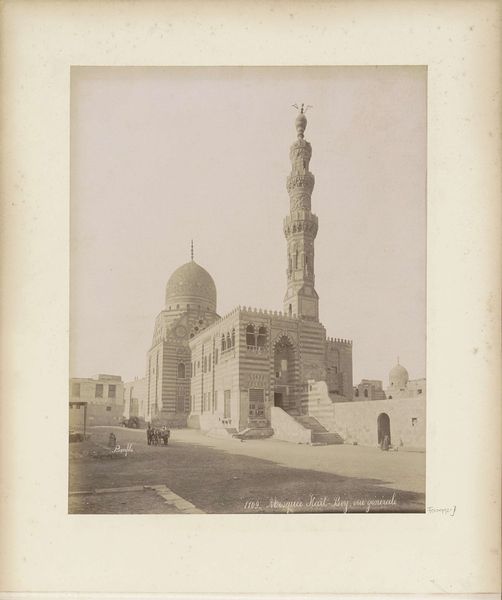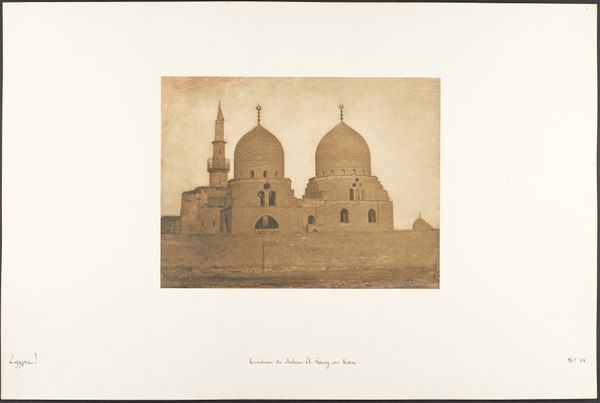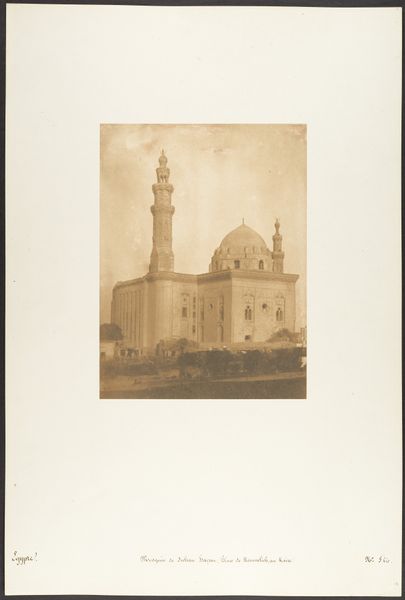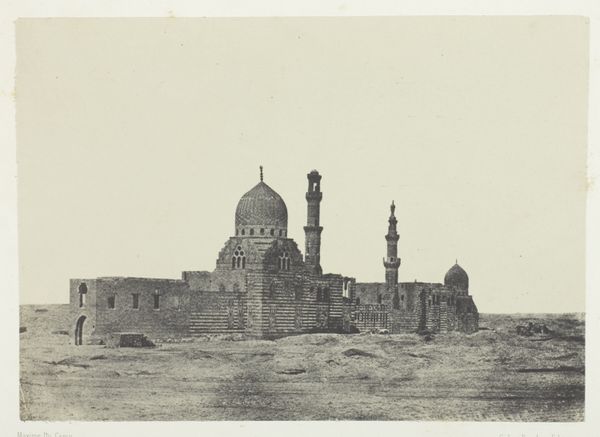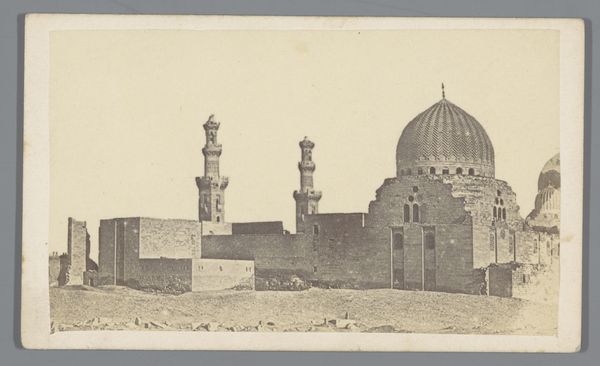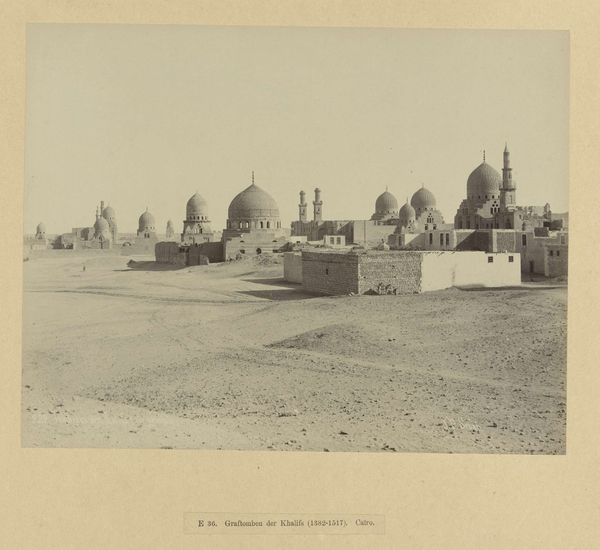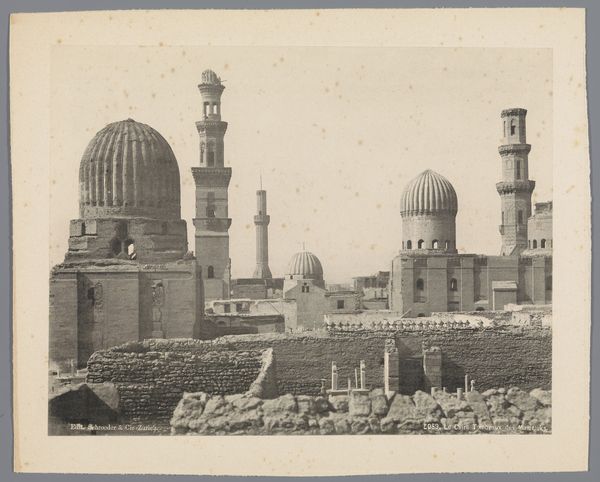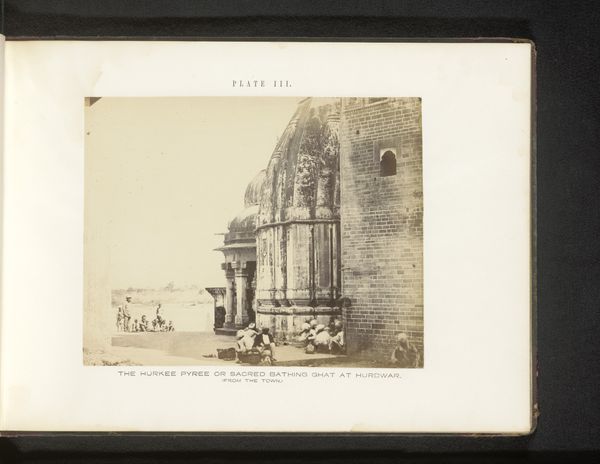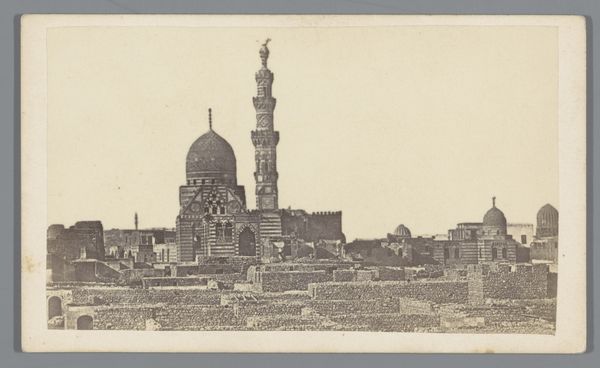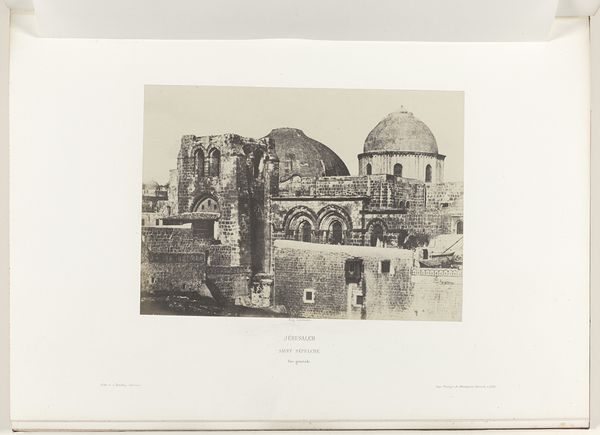
Vue générale de la Mosquée et du Tombeau de Sultan Bezkouk, El-Melek-el-Dâher, au Kaire 1849 - 1850
0:00
0:00
daguerreotype, photography, architecture
#
landscape
#
daguerreotype
#
photography
#
islamic-art
#
architecture
Dimensions: Image: 6 1/8 × 8 5/16 in. (15.6 × 21.1 cm) Mount: 12 5/16 × 18 11/16 in. (31.2 × 47.5 cm)
Copyright: Public Domain
Curator: This is Maxime Du Camp's "Vue générale de la Mosquée et du Tombeau de Sultan Bezkouk, El-Melek-el-Dâher, au Kaire," a daguerreotype from around 1850, currently housed at the Metropolitan Museum of Art. Editor: It has such a somber feel, doesn't it? The muted tones, the stark composition—it evokes a sense of timelessness and a certain austerity. The domed structure really anchors the visual weight. Curator: Indeed. The artist employs a clear foreground, middle ground, and background to guide the viewer's eye. Consider the precise lines of the architecture itself. The minarets especially exemplify a kind of divine reaching. Editor: Precisely, that reaching hints at the immense labor embedded in the materials. The way it captures the rough texture of the stone hints at the sheer manpower needed to build a structure of that scale and also the time it would take. It must have been an act of devotion and resource mobilization on an almost incomprehensible scale! Curator: Absolutely. The light and shadow play an important role. Note how it delineates form, accentuating the geometric purity of the structure. This enhances the visual harmony and directs the gaze through distinct zones of light and dark. This play reinforces an ideal, maybe the one that drove the design and construction. Editor: But the image itself, as a material object, offers a tangible connection to that distant labor. Consider what would have been involved. The early photographic process involved dangerous chemicals; transporting such materials to Egypt would be itself an act of commitment! Curator: Du Camp uses a structured organization that underscores the timeless quality. The interplay of shapes—domes, minarets, arches—create rhythm, offering visual coherence and the enduring sacred. Editor: Thinking of that journey and that early practice helps one meditate on its creation. From a materials perspective, photography democratizes art, potentially challenging traditional art forms dominated by wealthy patrons commissioning unique works from select artists. Now there are accessible images available for wider audiences. Curator: Yes, through its visual balance, the Daguerrotype conveys symbolic value. Editor: It provides a crucial artifact offering a new perspective. The architecture represents skill and dedication; that must resonate regardless of the viewer's culture. Curator: Seeing that symmetry and understanding its purpose certainly gave me insight. Editor: And the knowledge of its painstaking creation allows one to better value the whole piece!
Comments
No comments
Be the first to comment and join the conversation on the ultimate creative platform.
